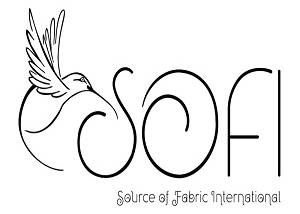Lace fabric is synonymous with elegance and sophistication, often seen gracing wedding gowns, evening dresses, and delicate lingerie. This article explores what lace fabric is, its unique properties, and the intricate process behind its creation.
Understanding Lace Fabric: An Overview
Lace fabric is a delicate and ornamental textile, made from thread or yarn, often in an open web-like pattern. Lace can be made by hand or machine, and it is used for various purposes including clothing, home decor, and accessories.
Properties of Lace Fabric
Lace fabric boasts several unique properties that make it highly desirable:
- Delicacy and Elegance: Lace is renowned for its intricate patterns and fine details, which contribute to its delicate appearance.
- Breathability: The open, web-like structure of lace allows for excellent air circulation, making it a popular choice for summer garments.
- Versatility: Lace can be made from various materials, including cotton, silk, and synthetic fibers, each offering different characteristics and uses.
- Aesthetic Appeal: Lace adds a touch of sophistication and femininity to any garment or accessory.
- Durability: Despite its delicate appearance, lace can be quite durable, especially when made from synthetic fibers.
How is Lace Fabric Made?
The process of making lace fabric is intricate and requires precision and skill. There are several methods for producing lace, including:
Hand-Made Lace
1. Needle Lace: This involves creating a series of stitches with a needle and thread on a temporary backing material. The backing is later removed, leaving behind the delicate lace pattern.
2. Bobbin Lace: This method uses bobbins to manage multiple threads, which are woven together over a pillow. Pins are used to hold the pattern in place as the lace is created.
Machine-Made Lace
1. Leavers Lace: Developed in the early 19th century, the Leavers machine mimics the intricate patterns of hand-made lace. This machine can produce highly detailed and fine lace fabrics.
2. Raschel Lace: Raschel knitting machines use a combination of warp and weft knitting to create lace. This method is faster and less expensive than Leavers lace, making it ideal for mass production.
Must Read: Top Trends in Wholesale Sweater Knit Fabric for Fall and Winter 2024
Types of Lace Fabric
Lace fabric comes in various types, each with distinct characteristics:
- Chantilly Lace: Known for its fine ground, outlined pattern, and abundant detail.
- Alençon Lace: Features a distinct floral design on a net background, often used in bridal wear.
- Guipure Lace: A heavier type of lace with a continuous motif, without a net background.
- Venetian Lace: Characterized by its heavy, raised design and rich texture.
- Embroidery Lace: Involves decorative patterns embroidered onto a base fabric, often used for decorative purposes.
Applications of Lace Fabric
Lace fabric’s versatility makes it suitable for a wide range of applications:
- Fashion: From bridal gowns to evening wear, lace is a high-fashion staple.
- Lingerie: Its delicate and breathable nature makes lace perfect for intimate apparel.
- Home Decor: Lace curtains, tablecloths, and pillowcases add a touch of elegance to any home.
- Accessories: Lace can be used in making accessories like gloves, shawls, and veils.
Caring for Lace Fabric
Due to its delicate nature, lace fabric requires special care:
- Hand Washing: It is best to hand wash lace garments using mild detergent and cold water.
- Drying: Lay the lace flat on a towel to dry. Avoid wringing or twisting the fabric.
- Storage: Store lace garments in a cool, dry place, preferably wrapped in acid-free tissue paper to prevent yellowing.
Conclusion
Lace fabric remains a timeless and versatile textile, cherished for its elegance and intricate beauty. Understanding its properties and its detailed creation process can help you appreciate this exquisite fabric even more. Whether used in fashion, home decor, or accessories, lace continues to captivate and inspire.


